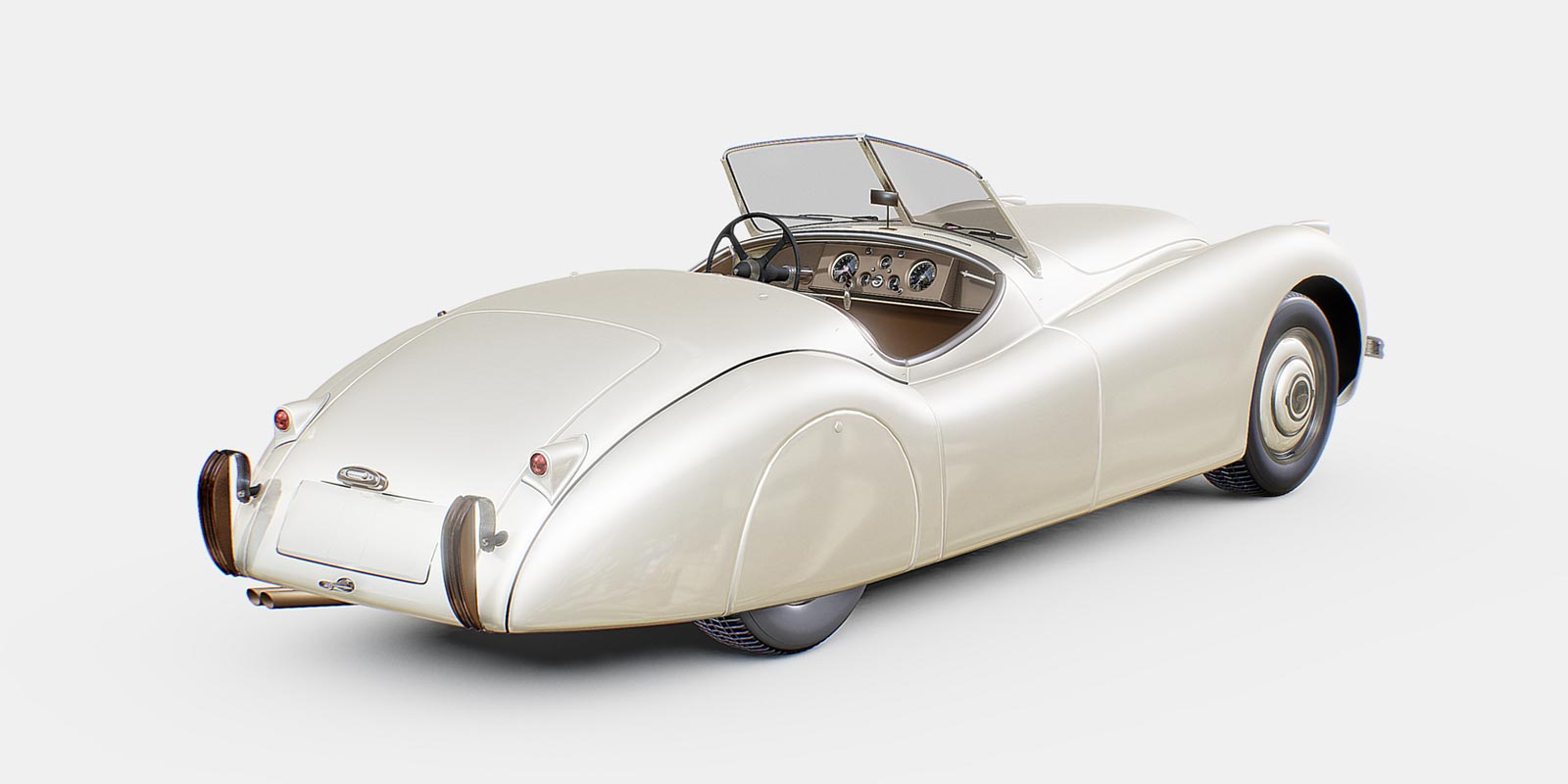When Six Cylinders Became Kings: How William Lyons, William Heynes and Norman Dewis Gave Birth to a British Legend
It all began in the doldrums of post‑war Britain. Sir William Lyons, Jaguar’s head honcho, and Chief Engineer William Heynes whipped up the XK120 in just three electric months for the 1948 London Motor Show. Lyons sketched the flowing curves himself—no CAD, no CGI, just a pencil and instinct—and emerged with what many still call the most beautiful sports car ever penned.
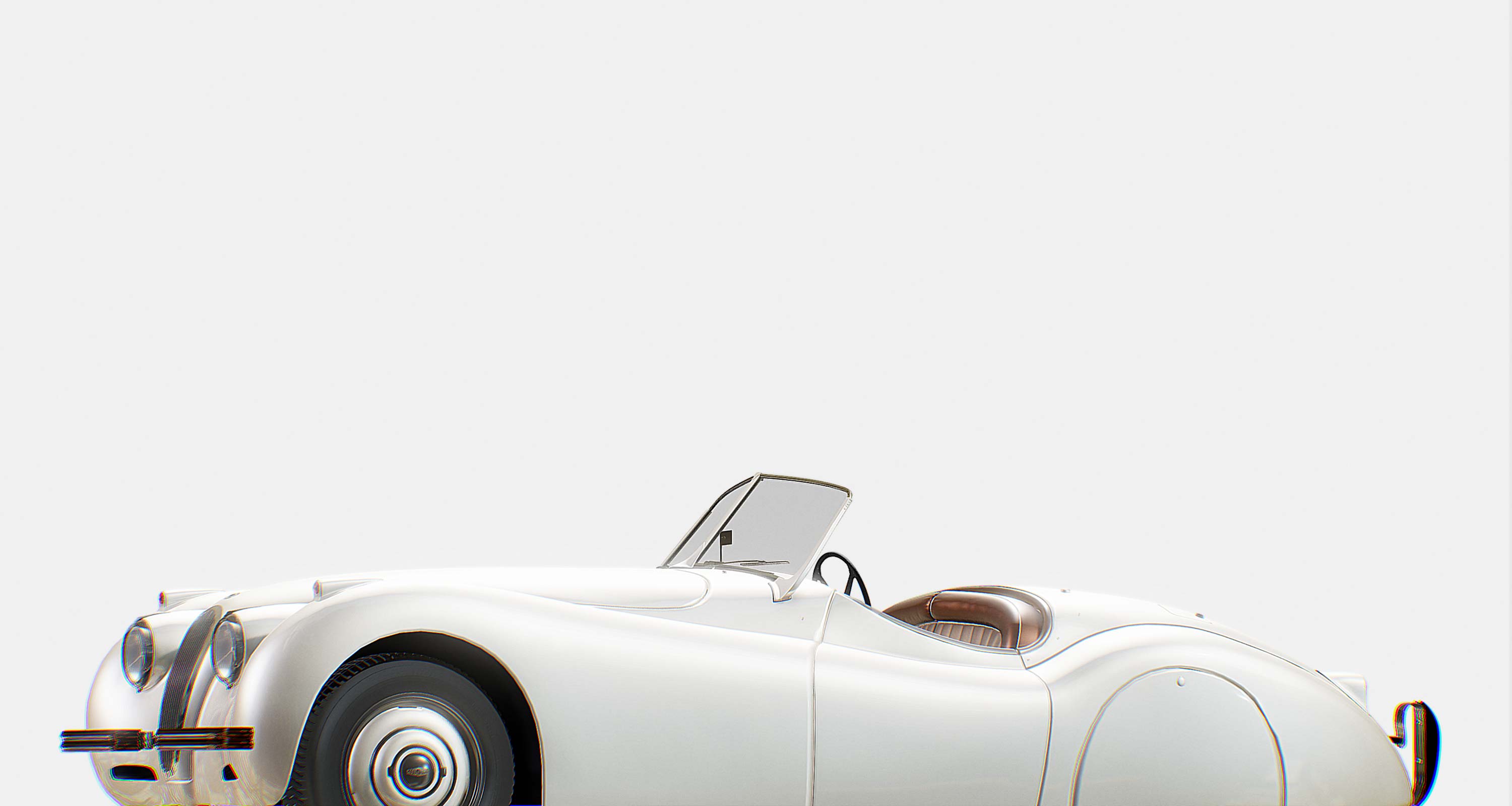

Under the bonnet resides Heynes’ masterpiece: a 3.4 L DOHC inline‑six that would roar to 160 hp (180 hp in Special Equipment “M” form), making the XK120 the fastest production car of its time, topping over 132 mph in high‑gear testing. Heynes didn’t stop there—he also designed the torsion‑bar front suspension and later spearheaded Jaguar’s disc‑brake evolution.
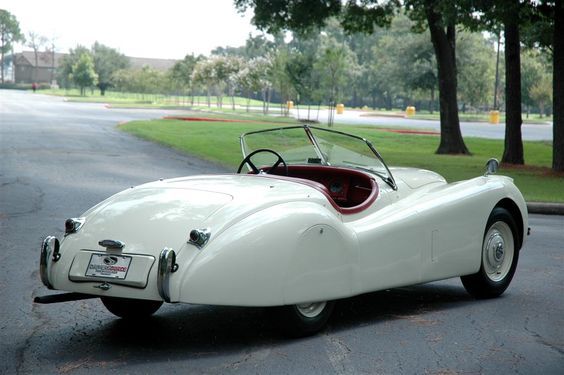
At Jabbeke in Belgium on May 30, 1949, test driver Ron “Soapy” Sutton coaxed 132.6 mph out of one test car, long before proper wind tunnels existed. Then came Montlhéry, where Leslie Johnson and Stirling Moss averaged over 100 mph for 24 hours, and even shattered the one‑hour average with 131.8 mph. The XK120 was more than a showboat—it was a bullet.

Its racing pedigree? Legendary. Jaguar shipped crews and cars to Silverstone, Le Mans, Mille Miglia, Targa Florio, Tulip Rally and Alpine Rally, where factory‑supported drivers like Johnson, Moss, Ian Appleyard, and Clemente Biondetti scored multiple wins. Appleyard—Lyons’ daughter’s husband—won the coveted Coupe d’Or in ’52, becoming the first to do so in an XK120.
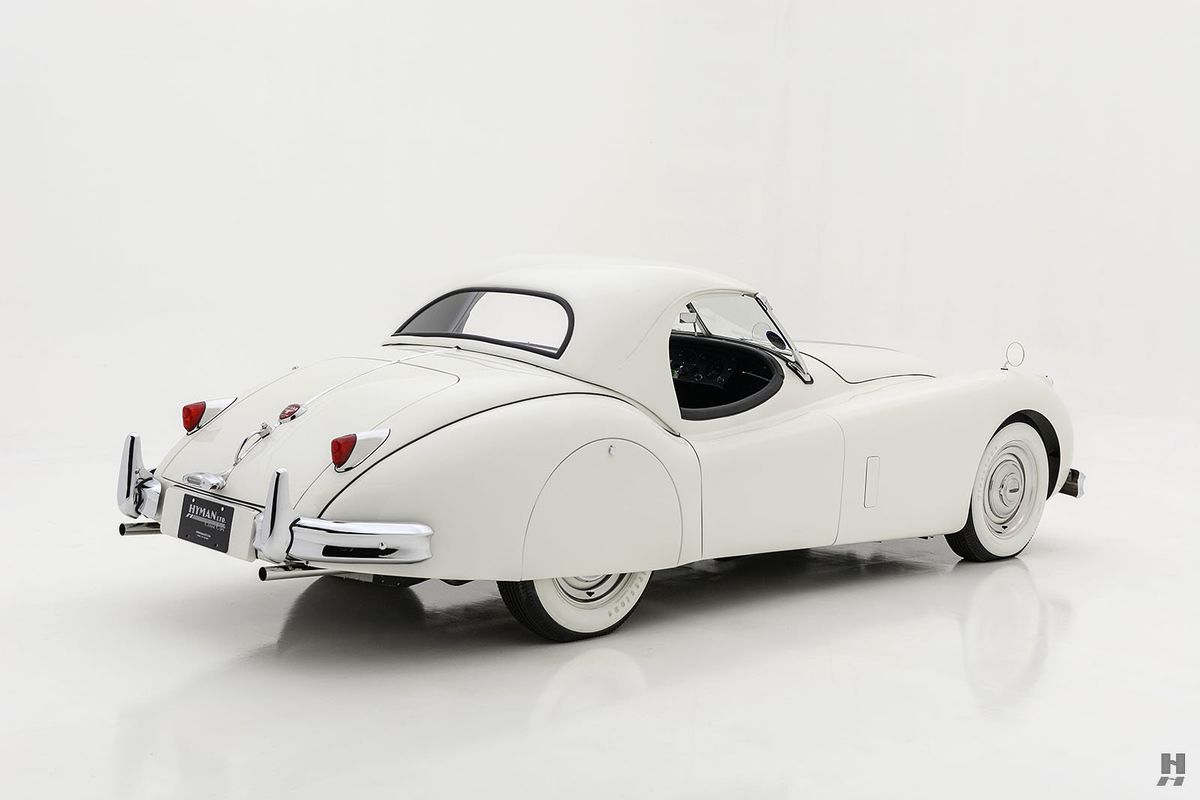
Behind the scenes was Norman Dewis, Jaguar’s chief test driver and development genius. In 1953, he staged a hair‑raising run back at Jabbeke, pushing a bubble‑canopied XK120 to 172 mph. Dewis shaped the soul of Jaguar’s sporting image.
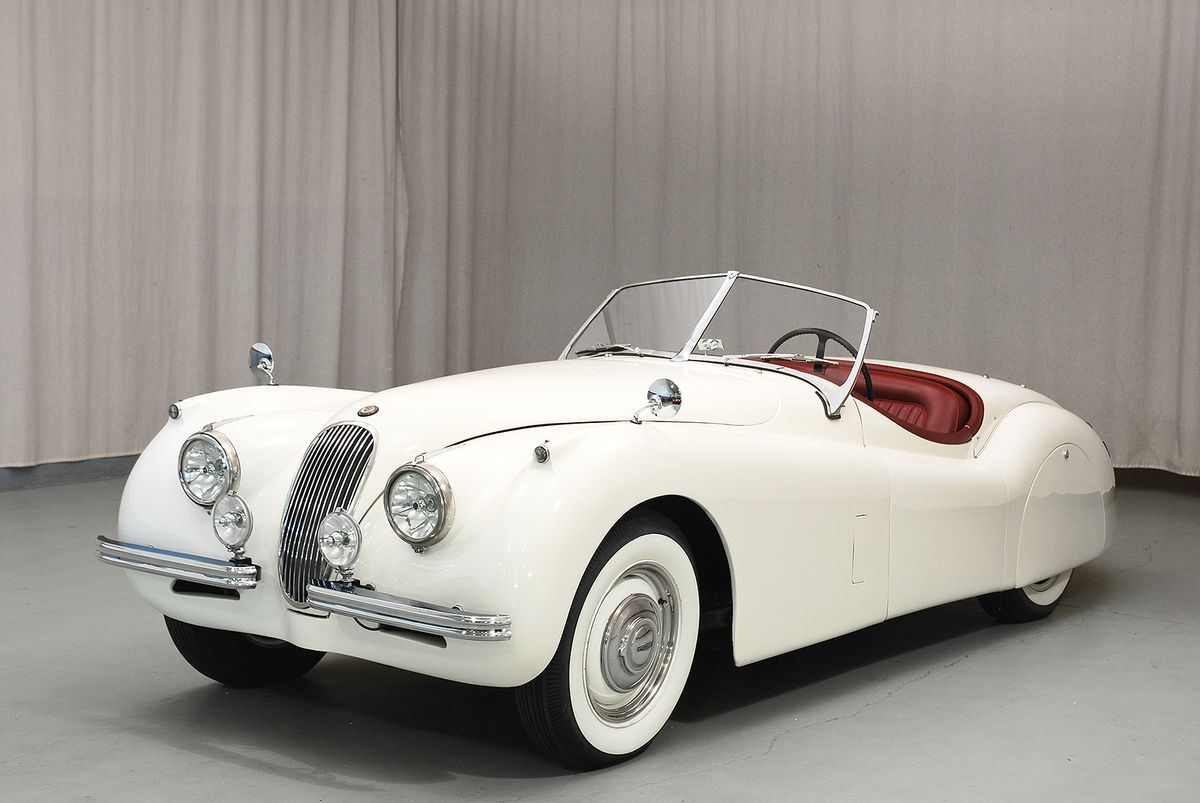
Those racing exploits beget engineering spin‑offs. The alloy-bodied LT series—so rare that one became the world’s fastest XK120 with a 3.8 L engine and D‑Type brakes—were forged as C‑Type stand‑in backups. One such LT1, piloted on groceries around Vancouver, ended up on race podiums thanks to Cambridge alumnus Bob Berry, who later became a leading Jaguar engineer.
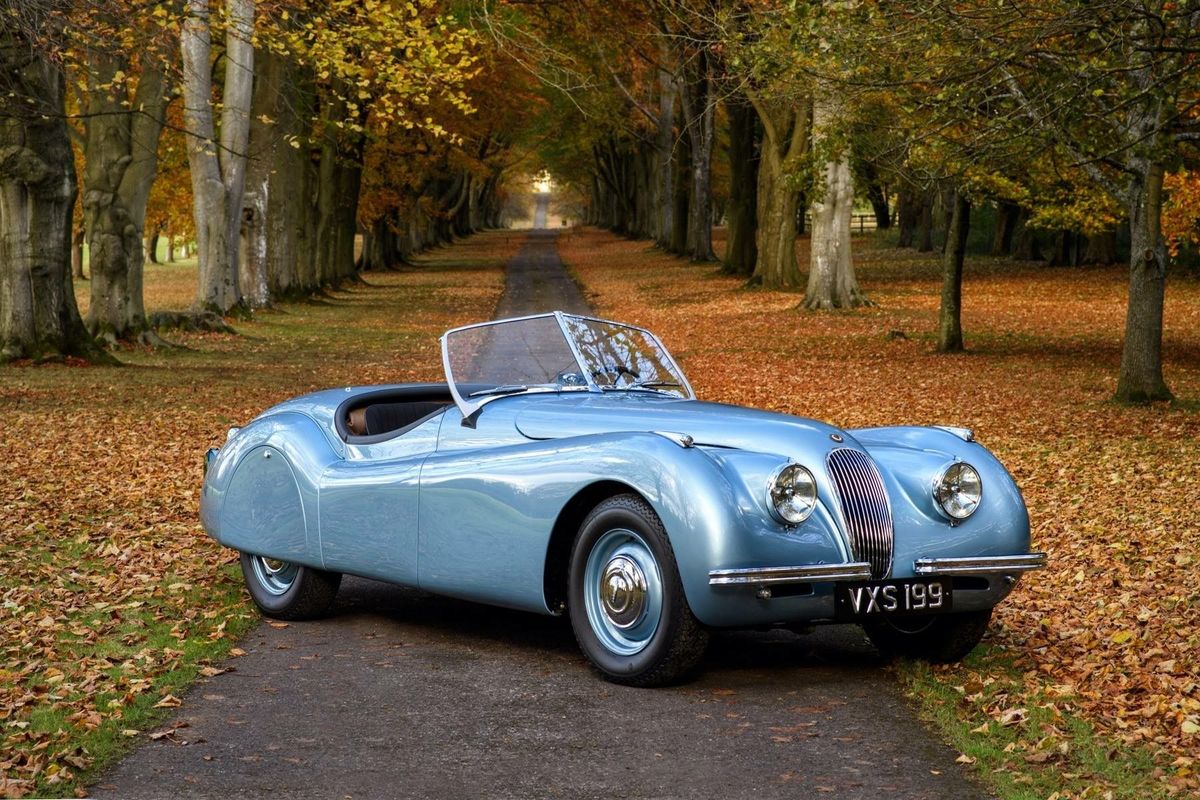
One more thrill: in 2009, Top Gear crew pitted a walnut‑winged XK120 against a Vincent Black Shadow bike and steam locomotive Tornado in the epic “Race to the North.” Surprisingly nimble, the Jag held its own for hundreds of miles on A‑roads.
Why the XK120 still matters:It shifted Jaguar from post‑war austerity into a bleeding‑edge racing icon. Its engine underpinned generations of Jaguars—XK140, XK150, the C, D, E‑Types, and even the V12s. Designers Heynes and Sayer continued evolving its aerodynamic purity into the C‑Type and D‑Type. Valley‑wood artisans still drool at its hand‑beaten aluminium panels and wood‑framed coachwork. And while it cost less than £1,300 new, today an unrestored alloy example still fetches near half a million dollars.
